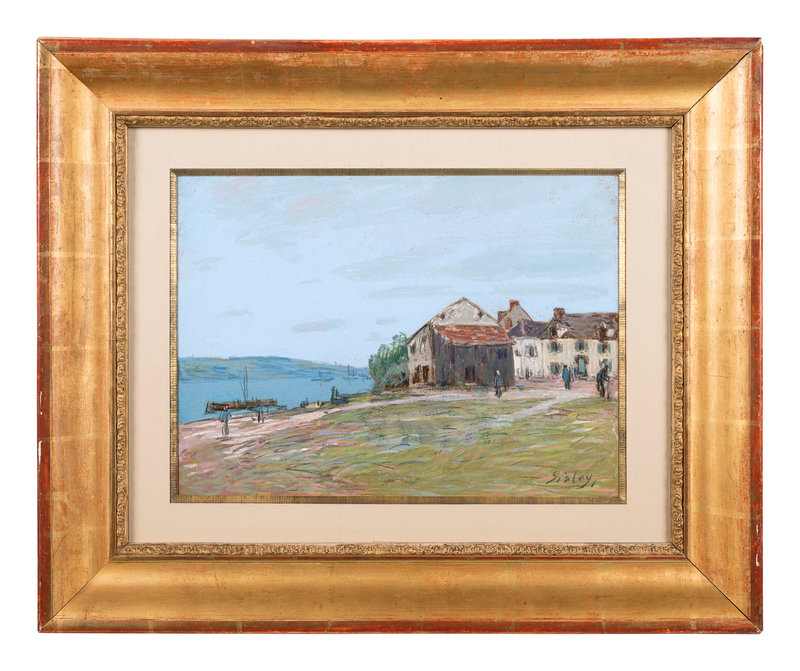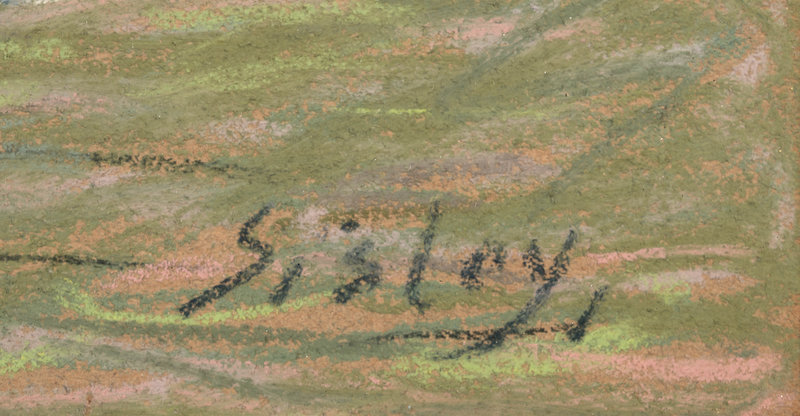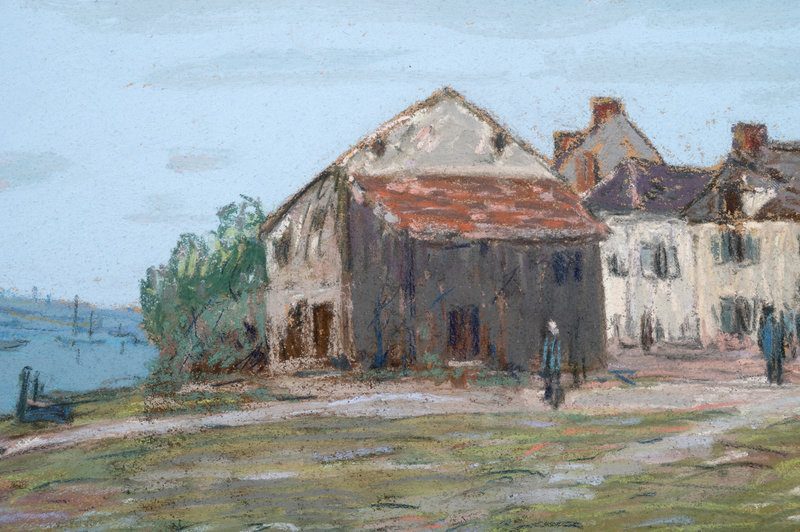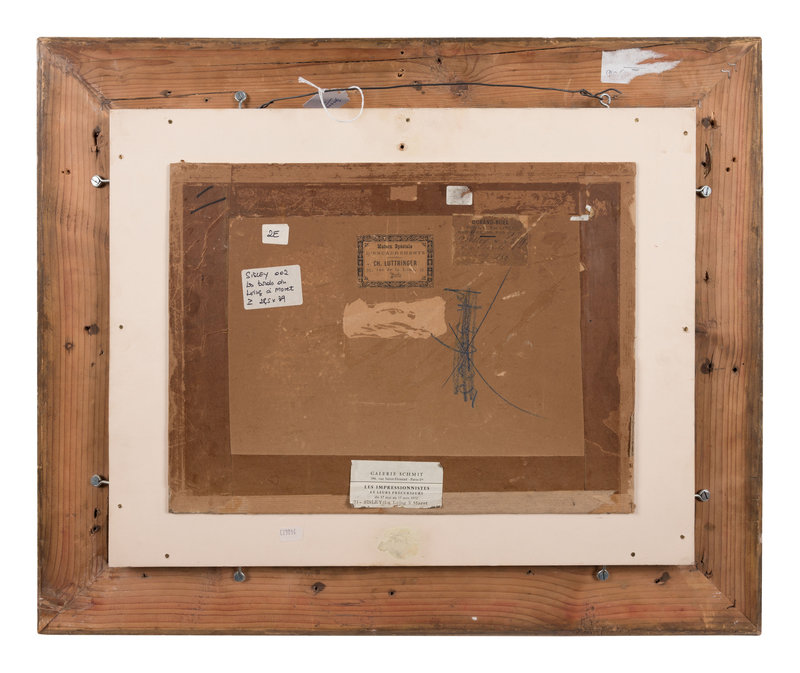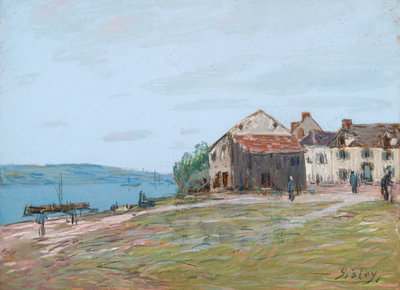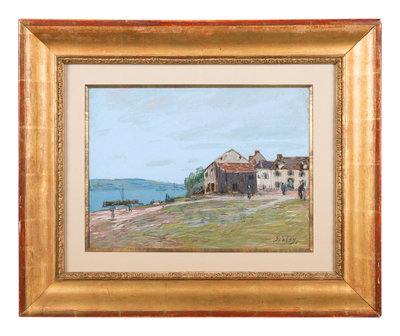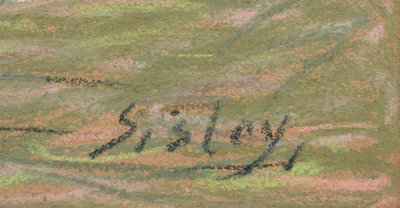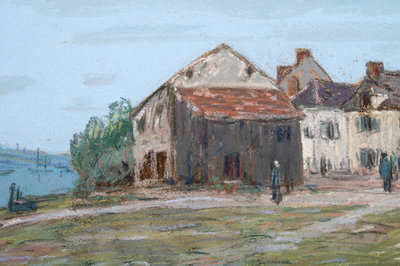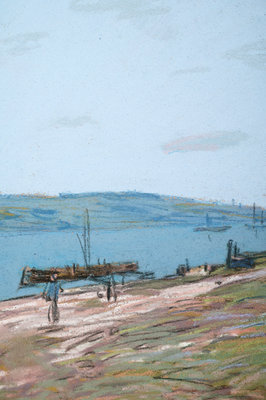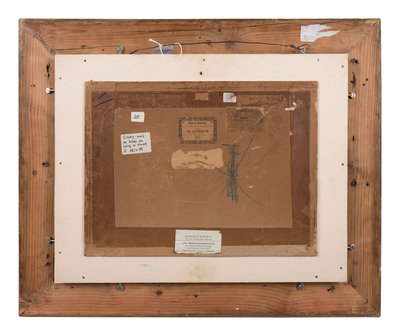Lot 11
Alfred Sisley
(French, 1839-1899)
La Seine à Saint-Mammès, c. 1886-90
Sale 1025 - American & European Art
May 10, 2022
10:00AM CT
Live / Chicago
Own a similar item?
Estimate
$50,000 -
70,000
Price Realized
$87,500
Sold prices are inclusive of Buyer’s Premium
Lot Description
Alfred Sisley
(French, 1839-1899)
La Seine à Saint-Mammès, c. 1886-90
pastel on paper
signed Sisley (lower right)
11 1/4 x 15 1/2 inches.
Property from the Collection of Richard D. Simmons, Alexandria, Virginia
Provenance:
Galerie Durand Ruel, Paris (stock no. 6874, as Les Bords du Loing à Moret)
Galerie Schmit, Paris
Mme Dodanthun, 1964
Sold: Hôtel des ventes, Marseille, November 25, 1972
Private Collection, Marseille
Galerie Daniel Malingue, Paris, Galerie Étienne Sassi, Vallauris et Galerie Hopkins-Thomas, Paris, by 1989
Sold: Hôtel des ventes, Saint-Germain-en-Laye, December 11, 1994, Lot 87
Private Collection
Hollis Taggart Galleries, Washington, DC
Acquired from the above by the present owner, May 1995
Exhibited:
Paris, Galerie Schmit, Les Impressionistes et leurs précurseurs, May 17 - June 17, 1972, p. 90, no. 71, illus. (as Le Loing à Moret)
Literature:
Sylvie Brame and François Lorenceau, Alfred Sisley: catalogue critique des peintures et des pastels, Paris, 2021, pp. 390; 510, no. P 33
Lot note:
The son of English parents, Alfred Sisley grew up in Paris but was sent to London for business school to follow in his merchant father’s footsteps. However, Sisley spent more time studying Turner and Constable in the London museums. He eventually returned to Paris in 1861, where he entered the studio of Charles Gleyre and attended the Swiss Academy. He trained alongside Frédéric Bazille, Claude Monet, and Pierre-Auguste Renoir, meeting to discuss the Impressionist style at the Café Guerbois. In 1874, he displayed his work at the first independent Impressionist exhibition. Consequently, even though his style and color palette are more subdued than Monet and Renoir, Sisley is considered a founding member of Impressionism.
Alfred Sisley’s La Seine à Saint-Mammès depicts a favorite Impressionist subject—the river Seine and the villages that border it. In 1880, Sisley and his family moved to Veneux-Nadon, where he commenced to paint numerous views of the bridges, riverbank, and quaysides of the surrounding villages. The area, with its gentle landscape and constantly shifting light, became his last home and a constant source of inspiration for his later work. Painted circa 1886-90, the present pastel is of the surrounding quay and buildings of the small town of Saint Mammès, situated at the confluence of the rivers Seine and Loing, just north of Moret-sur-Loing. The subtle luminosity of the overcast day in La Seine à Saint-Mammès captures the ephemeral effects of light, water, and weather on the surrounding landscape. The soft tones of the pastel are counterbalanced by the strong horizontals of the sky, land, and village buildings, and further enlivened by the diagonals cut by the paths and river.
Like Monet, "Sisley worked in all seasons and weathers along this beautiful and still unspoilt bank of the Seine. Its topography gave him new configurations of space in which far horizons combined with plunging views below; the horizontals of skyline, riverbank and receding path are overlaid by emphatic verticals and diagonals to produce densely structured surfaces…With more subtlety than before, he determines the exact relation of the sky to the silhouette of the land. He knows how to differentiate its planes, order its clouds, diminish or enlarge its scope to produce a harmony inseparable from the landscape below" (Richard Shone, Sisley, London, 1992, p. 135). With its nuanced luminosity, La Seine à Saint-Mammès is an outstanding example of Sisley’s dexterity with all mediums, including that of pastel.
Condition Report
Contact Information

